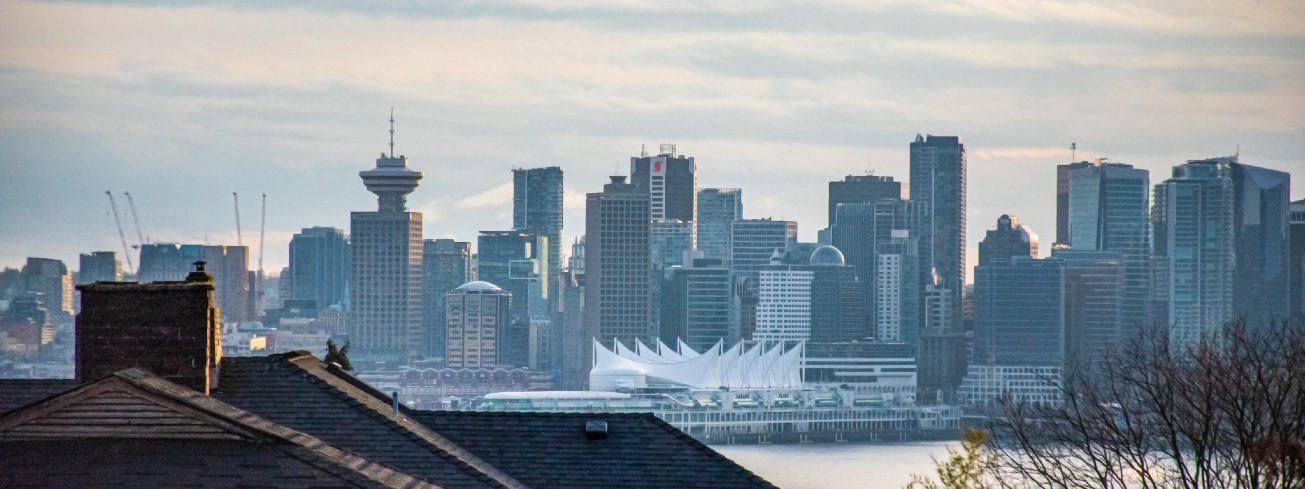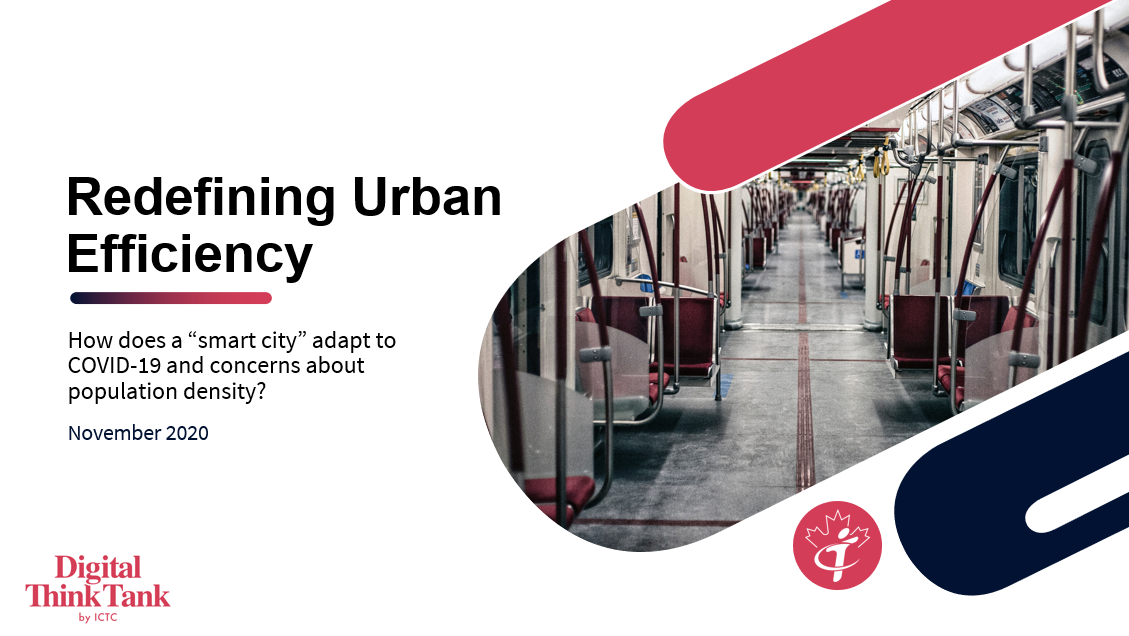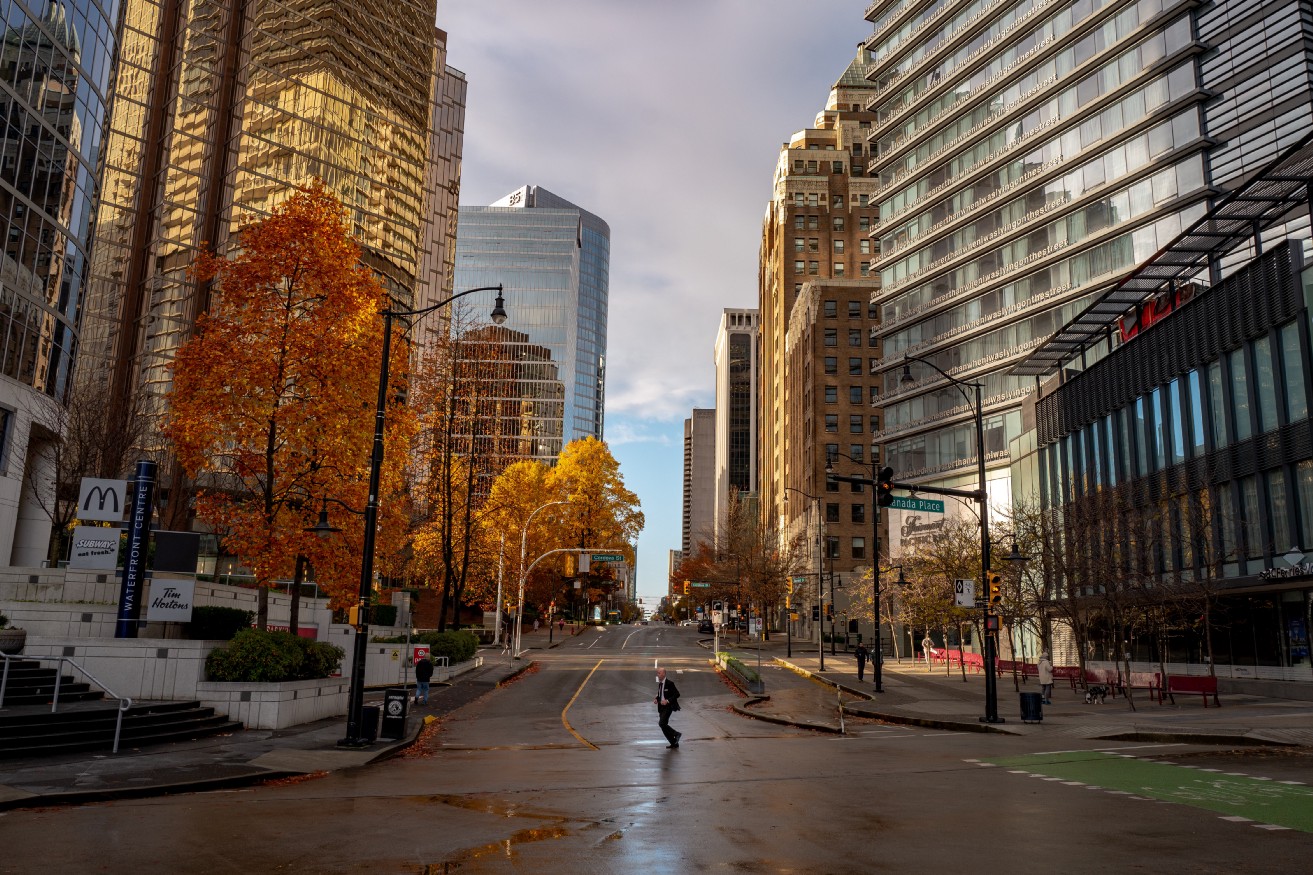Under the umbrella of the project Towards a Vibrant and Inclusive Smart Economy, this community engagement series aims to start city-specific conversations about what residents want their Canadian “Smart Cities” to look like.

Photo by Nattipat Vesvarute on Unsplash
On November 20, 2020, Rob Davidson, Tyler Farmer, and Faun Rice hosted a Smart Cities community engagement panel with a Vancouver audience, under the theme of “Redesigning Urban Centres in Light of COVID-19.” The event was intended to gather feedback on opportunities that Vancouver participants saw for their city: attendees were asked to reflect on the changes they would like to see in urban planning, data governance, and mobility following the pandemic.
Unlike the previous community engagement session held in Ottawa, this group was hosted by DAMA Vancouver, a data-focused special interest group that holds regular meetings to discuss data management and data governance. Accordingly, the session’s participants were primarily mid-career data-oriented professionals. Future events will be held with different stakeholder groups across the country.
This article summarizes the event, including participants’ comments and ideas for the City of Vancouver. The session began with a presentation by the ICTC team that clarified the definition of a “Smart City” and its usefulness for discussions on urban planning in light of COVID-19.
Framing Presentation: What does “Smart City” mean in a Canadian context?

Slide from Nov 2020 presentation at DAMA, ICTC
Over the next three decades, increases in population and urbanization will reinforce the already urgent need to manage resources more sustainably and equitably. In 2018, the United Nations projected that 68% of the world would live in urban areas by 2050 (up from 55%).[1] As a part of considerations like housing density, healthcare infrastructure, environmental efficiency, and mobility planning, today’s municipalities are faced with the challenge of managing resources efficiently and fairly. This challenge has only increased with the COVID-19 pandemic of 2020–2021, which has created budgetary crises for many municipalities in Canada.[2]
A “smart city” uses technology, in coordination with other resources, to manage its resources and infrastructure more efficiently, thus responding to some of the challenges listed above. The pandemic has also highlighted numerous equity-related vulnerabilities in urban systems, as witnessed by issues such as housing insecurity, inequitable internet access, data gaps and privacy concerns, and crises in public transit systems.[3] A “smart city” project need not involve high-tech sensors, predictive models, or digital twins: rather, a smart city uses technology to manage its resources more efficiently and equitably.
With this context in mind, participants were broken into three virtual discussion groups, each with one theme to tackle.
In light of COVID-19 and other events in 2020, what differences do we see in the following categories:
- Public Spaces?
- Mobility?
- Data Governance?
How do we want to redesign these elements in a post-pandemic world, with a particular focus on Vancouver?
The following points summarize the conversations that were had across all three breakout groups: while originally designed as separate topics, urban spaces, mobility, and data governance proved to be highly interconnected and of interest to all involved.

Photo by Elton Luz on Unsplash
Discussion
1. Municipalities face their fair share of challenges:
COVID-related “winners” and “losers” have implications for municipal revenue. The biggest “losers” from COVID-related central business district (CBD) depopulation include restaurants, hotels, public transit, offices, and event venues. The issue of paid parking was also raised: Like public transit, the use of paid parking is down (and not often discussed). Cities rely heavily on revenues from CBD parking, and Vancouver is no exception. Another participant mentioned that revenue losses from public transit were only being viewed as dire because of the choice to run TransLink as a revenue-generating service.[4]
More multimodal mobility infrastructure is a necessary complement to any increase in mobility pricing. The City of Vancouver is running a feasibility study on transport pricing for downtown core access for vehicles.[5] Participants had mixed feelings about this study. Several noted that this could disadvantage individuals who still needed to commute in and out from areas with low public transit access, contending that public transit coverage would need to be more robust (or more advanced multi-modal transport integration achieved) to avoid disadvantaging some neighbourhoods disproportionately. The trend toward “micro-mobility,” including more walking and biking, was considered positive, in part because of its assumed contribution to public health — participants anecdotally noted an uptick in cycling activity (perhaps due to public transit fears) and requested more bike lane infrastructure and traffic management tools.
2. Some of COVID’s impacts might outlast the pandemic:
Long-term planning needs to consider the permanence or impermanence of different public space uses. Another question the group considered was the longevity of all of COVID-related behaviour changes. In the coming years when a vaccine is available, which trends will reverse and which will stay the same? For example, public transit could rebound or carry a lasting stigma as a place for disease transmission. Participants suggested examining data from other cities and previous health crises to understand which urban patterns endured. One member of the group suggested that public sentiment will be a powerful force in this matter in North American. For example, changes that people wanted even before the pandemic — such as extending restaurant patios into alleys and streets or being able to work from home — would be likely to stick around.
Assuming that working from home is a trend with longevity, we might need new types of residential neighbourhood infrastructure. It seems likely that many remote workers who have escaped a long commute this year will not be eager to return to it; accordingly, some participants suggested that residential neighbourhoods needed new services. In general, participants were in support of more pedestrian-friendly spaces and ensuring that housing density was accompanied by green spaces, parks, and walkable amenities. Participants voiced a desire to see more local services, competitive grocery store prices, and proximate restaurants. Furthermore, the idea that residential neighbourhoods might create flexible co-working spaces was raised, suggesting that people might still want to have social contact while working remotely without the big commute to a CBD.

Photo by Kosuke Noma on Unsplash
3. Relevant data should be more robust and more open, with an eye to privacy and safety:
Open data about public spaces and mobility is not currently very robust. Many of the groups discussed data gathering, use, and presentation related to public spaces and mobility. Participants noted that data about public spaces, businesses, and building capacity should be more widely available for people assessing whether or not a location is safe for them (with regard to virus exposure). For example, an immunocompromised person considering taking the SkyTrain might want to know how many people there are in each car at different hours of the day. As another example, open data related to traffic could help a cyclist choose their morning commuting route. In addition, data about the acceptable and safe use of public spaces (such as whether or not children need to be wearing masks during an informal soccer game, if parents can attend, etc.) was difficult to find at the time of the discussion.
However, it is important to consider consent and privacy when designing data collection and governance strategies. In the public spaces group, one participant asked whether the wide availability of public data could ever be dangerous, raising the example of the Stanley Cup riots. Discussion varied on the expectation of privacy in North America and whether or not it was helpful to have mass open data on public behaviour during exceptional circumstances like a pandemic. In the data governance group, the discussion focused on new federal legislation, consent requirements, and the role of synthetic data: both as a privacy-enhancing opportunity and a tool that needs its own ethical governance for a wide variety of reasons. There are a number of initiatives for Data Governance standards and practices in Canada, including the Canadian Data Governance Collaborative,[6] the Samuelson-Glushko Internet Policy Clinic project,[7] and the First Nations Information Governance Centre’s OCAP principles.[8]
New types of data will become more important in a post-COVID environment. For example, neighbourhood walkability scores might play a greater role in pricing considerations relative to transit corridors, assuming that many residents continue to work from home. In addition, improved mobility data (discussed above) could help transportation planners make more informed decisions about infrastructure upgrades, while data on the environmental impacts of different transportation choices could help consumers improve their carbon footprints.
In Conclusion
This Vancouver smart city discussion emphasized using COVID as an opportunity to keep the good and toss the bad. Changes to urban space use that people liked, such as working from home, extending restaurant patios, and creating more active mobility-friendly infrastructure, should stick around or be enhanced in post-COVID Vancouver.
In a future where more Vancouverites are working from home, neighbourhoods might need to adopt new types of local infrastructure. Green spaces, local shared offices, and competitive grocery stores were all discussed.
Public transit revenue losses were seen as a real challenge, and participants offered a variety of ideas to solve this issue. A downtown transport tax could work if public transit was made more robust, and multi-modal transportation options could help people make environmental and healthy choices about their commutes. Importantly, improved public transit use data could help people feel safe on transit systems and ensure that new investments are data-driven. Improvements to open data should be made with an eye to privacy, consent, and safety.
DAMA Vancouver’s chapter members and guests provided great value to ICTC’s smart city community engagement series. Stay tuned to learn about future opportunities to participate in public engagement events with the team, coming to a Canadian city near you virtually or (one day) in person!
References
[1] Population Division of the Department of Economic and Social Affairs of the United Nations, 2018 Revision of World Urbanization Prospects, 2018, https://population.un.org/wup/.
[2] “Canadian municipalities could face $20B budget shortfall from 3 months of COVID-related closures,” CBC Radio, June 6 2020, https://www.cbc.ca/radio/costo…
[3] These and other priorities are outline by the Federation of Canadian Municipalities in, “Building back better together,” 2020, https://data.fcm.ca/documents/… .
[4] As opposed to some cities around the world which are experimenting with free transit: for example, see Lila MacLellan, “Luxembourg is following dozens of cities in making public transit free,” Quartz, March 1, 2020, https://qz.com/1810923/luxembo….
[5] City of Vancouver, “Transport pricing,” Vancouver.ca, accessed January 4, 2020, https://vancouver.ca/streets-t….
[6] The Standards Council of Canada, “Canadian Data Governance Standardization Collaborative,” https://www.scc.ca/en/about-sc… , accessed January 4, 2021.
[7] The Samuelson-Glushko Canadian Internet Policy and Public Interest Clinic, “Data Governance,” https://cippic.ca/index.php?q=… , accessed January 4, 2021.
[8] The First Nations Information Governance Centre, “The First Nations Principles of OCAP®,” https://fnigc.ca/ocap-training… , accessed January 4, 2021.
